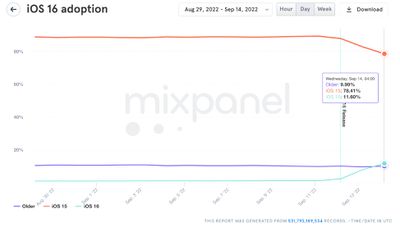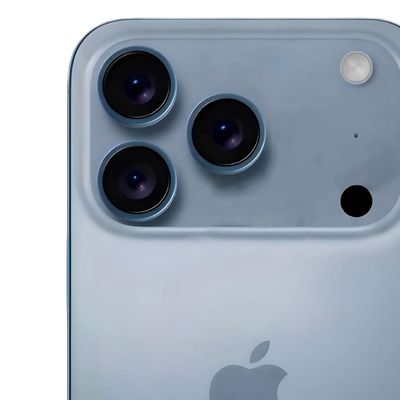iOS 16 is installed on an estimated 11.6 percent of iPhones two days after it launched, according to data shared by analytics company Mixpanel. The iOS 16 update was released to the public on Monday morning, and the site's data is accurate as of 12:00 a.m. Eastern Time on Wednesday morning.

When iOS 15 was released last year, it was installed on just 8.5 percent of devices at the two day mark, which means people are installing iOS 16 at a more rapid pace this year.
iOS 16 is perhaps a more appealing update because of the visual changes that it brings to the iPhone with the customizable Lock Screen and widget options. It also brings desirable Messages features that include iMessage editing, undo send, and more.
There are iOS 16 features that have been delayed, such as iCloud Shared Photo Library, Matter support, and the Freeform app, so we will see installation numbers tick up after these options become available. We also typically see a solid jump when new emoji are added, and we could get an emoji update sometime this fall.
At the current time, Apple is also giving people the option to stay on iOS 15.7, a move that can also keep people from installing the iOS 16 update. With iOS 15, Apple allowed people to stay on iOS 14 for some time, but removed the option four months after the launch of iOS 15.
Mixpanel measures iOS adoption rates based on visits to apps and websites where its analytics metrics are used, and this is not official data from Apple. Apple may not provide updated iOS installation numbers for some time as it has not updated iOS 15 information since May 31.
The data from Mixpanel suggests that 78.41 percent of people are continuing to run iOS 15, and nearly 10 percent have an older version of iOS. The new iOS 16 update is available on the iPhone 8 and later, with Apple dropping support for the iPhone 6s and iPhone 7 models.
If you haven't yet installed iOS 16, we have a great iOS 15 vs. iOS 16 guide that can help you decide whether to update. Once you've installed iOS 16, we also have we have a walkthrough that helps you figure out what to set up first, as well as an iOS 16 roundup that has details on all of the available features.





















